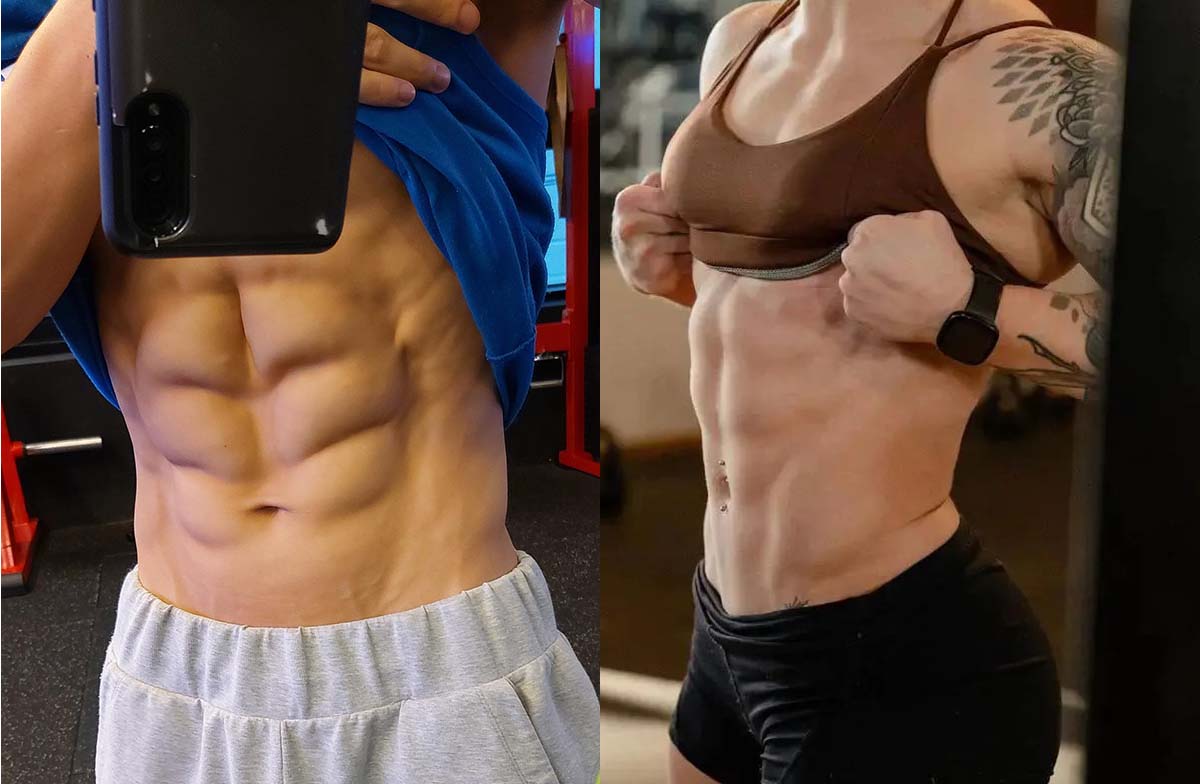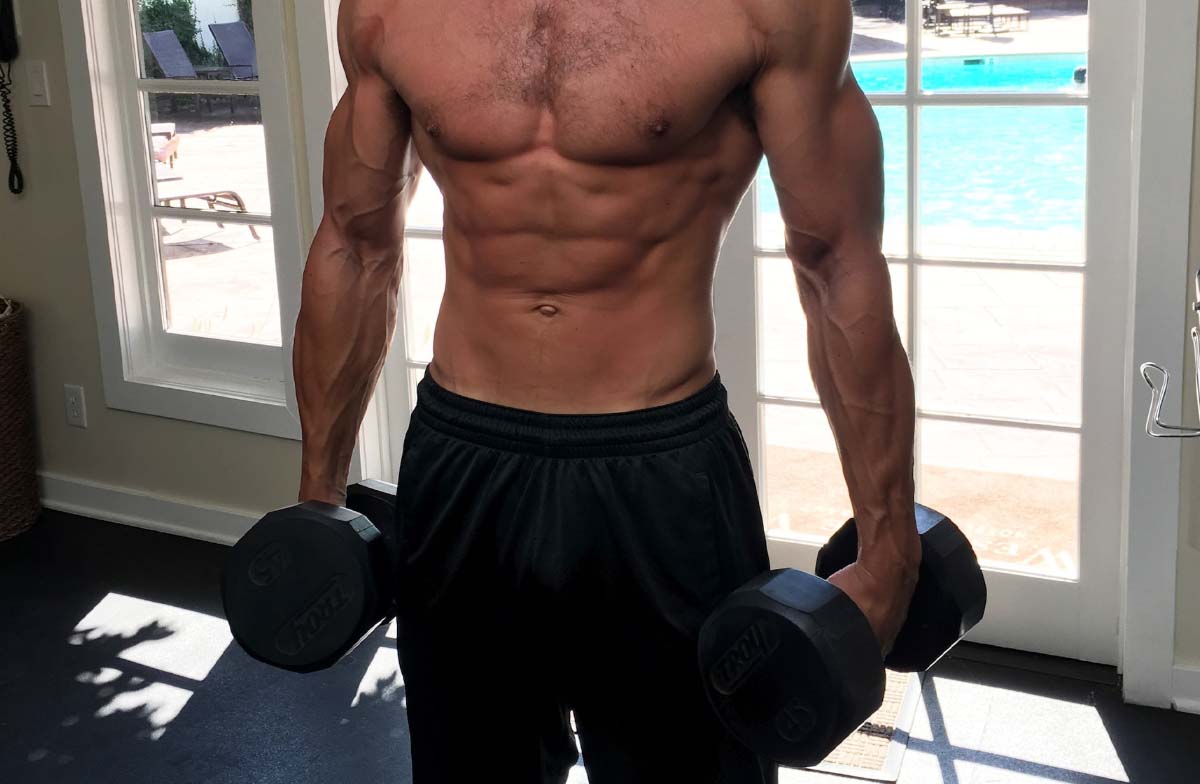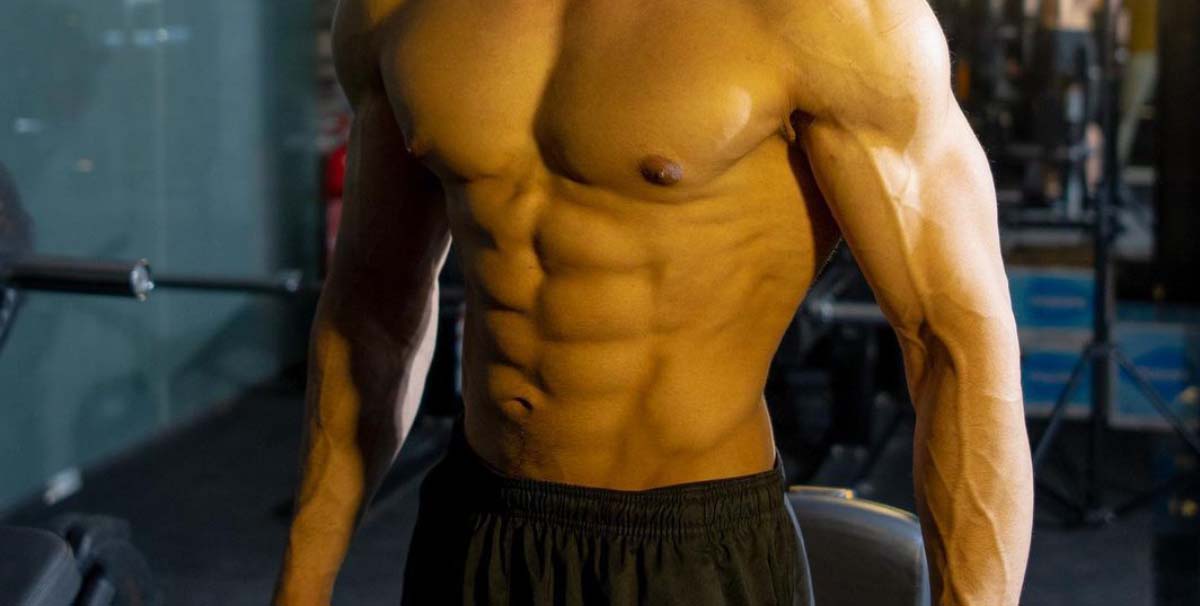Are you tired of constantly flexing your muscles to show off those abs? You’re not alone!
As a personal trainer with over 10 years of experience, I’ve worked with countless clients who struggled with the same issue.
But fear not, I’m here to share the secrets to achieving and maintaining visible abs without flexing.
In this article, we’ll dive into the most effective exercises, diet tips, and lifestyle changes that will help you transform your core and maintain those chiseled abs effortlessly.
So, whether you’re a fitness enthusiast or just starting your journey, let me guide you on the path to a more defined and confident you. Let’s get started!
Can You Have Visible Abs Without Flexing?
Yes, it’s possible to attain visible abs without flexing by maintaining a low body fat percentage, typically around 5-6%.
However, this level of leanness is not recommended for most people due to potential health concerns.
To attain such a physique, one needs to commit to years of rigorous workouts, strict dieting, and discipline.
While possible, it’s not a realistic goal for everyone, as the visibility of abs largely depends on an individual’s body fat percentage.
Factors Affecting Visible Abs Without Flexing

The Science Behind Ab Visibility
When I tested various factors affecting ab visibility, it became clear that two key components influence the appearance of abs: muscles and fat distribution.
Abdominal muscles are hidden beneath a layer of fat, and their visibility is determined by the thickness of that layer (4).
Water weight also plays a role in ab visibility. Fluctuations in your body’s water content can lead to bloating, which can temporarily mask abdominal definition (7).
Body Fat Percentage
My experience in fitness has taught me that body fat percentage is crucial in determining the visibility of abs without flexing.
Generally, a lower body fat percentage results in more defined abs. For men, abs typically become visible around 10-12% body fat, while for women, it’s around 16-19% (5).
Genetic Influence on Ab Visibility
Gender Differences
During the trial of various training programs, I observed that genetic factors, such as gender, also play a role in ab visibility.
Men tend to store more fat in the abdominal region, while women store fat in their hips and thighs (4). This difference in fat distribution affects the ease with which each gender can achieve visible abs.
Steps to Achieve Visible Abs Without Flexing

Nutrition and Diet
Macronutrient Balance
My observations have shown that a well-balanced diet is essential for achieving visible abs without flexing. A combination of carbohydrates, fats, and proteins is necessary for optimal health and body composition (6).
Importance of Protein
I’ve found that consuming adequate protein is crucial for both muscle growth and fat loss. A high-protein diet can help reduce appetite, promote satiety, and aid in weight loss (8).
Caloric Deficit
To achieve visible abs, you must create a caloric deficit by burning more calories than you consume. The Body Weight Planner can help determine the appropriate caloric intake for your goals (9).
Effective Abdominal Exercises
Compound Movements
Compound movements, such as deadlifts, squats, pull-ups, and bench presses, are highly effective for building overall strength and muscle mass, including the abs.
Direct Abs Training
Direct abs training, including exercises like planks, leg raises, and Russian twists, can help develop and define your abdominal muscles. Remember to apply progressive overload to continually challenge your abs and promote growth.
Cardiovascular Training
Cardiovascular training can help burn additional calories and improve overall fitness, contributing to a leaner physique and more visible abs.
Sleep and Recovery
Adequate sleep and recovery are essential for muscle growth and fat loss. It is during sleep that the body repairs and rebuilds muscle tissue (3).
Tips for Maintaining Visible Abs Without Flexing

Consistency in Training and Diet
Maintaining visible abs without flexing requires consistent effort in both training and diet. Develop a routine and stick to it for long-term success.
Monitoring Body Fat Percentage
Regularly monitoring your body fat percentage can help you track progress and make necessary adjustments to your diet and exercise program (5).
Keeping a Positive Mindset
A positive mindset can help you stay motivated and overcome obstacles on your journey to achieving visible abs.
Emphasizing the Importance of Progressive Overload in Abs Training
Continually challenge your abs by increasing the intensity, volume, or complexity of your exercises to promote growth and maintain definition (1).
Managing Stress
Managing stress is crucial, as excessive stress can lead to increased cortisol levels, which may contribute to weight gain and fat accumulation, particularly in the abdominal area (3).
Frequently Asked Questions
How long does it take to achieve visible abs without flexing?
The time it takes to achieve visible abs without flexing varies depending on factors such as your starting body composition, diet, exercise routine, and consistency. With dedication and hard work, noticeable changes can often be seen within a few months.
Can everyone achieve visible abs without flexing?
While genetics do play a role in ab visibility, most individuals can achieve visible abs with a combination of proper diet, exercise, and consistency.
However, it is essential to remember that everyone’s body is unique, and individual results may vary.
How can I maintain visible abs without flexing?
Maintaining visible abs without flexing requires a consistent approach to diet and exercise, monitoring body fat percentage, managing stress, and maintaining a positive mindset.
By prioritizing these aspects, you can keep your abs visible even when you’re not flexing.
Summing it Up
A proper diet, efficient abdominal exercises, and a healthy lifestyle can help you get and keep abs that show without flexing.
While genetics and gender do play a part in ab visibility, hard work and perseverance can help you overcome these obstacles. However, keep in mind that folks with poor ab genetics may have fewer defined abs, resulting in a 6, 8, or even 10-pack being extremely rare.
The advice and suggestions in this piece will help you reveal your abs and keep them that way for awhile.
References:
- Anders Falk Brekke, S. O.-L. (2020, January 20). Non-surgical interventions for excessive anterior pelvic tilt in symptomatic and non-symptomatic adults: a systematic review. Retrieved 2023, from https://www.ncbi.nlm.nih.gov/pmc/articles/PMC7017593/
- Gregory Traversy, J.-P. C. (2015, January 8). Alcohol Consumption and Obesity: An Update. Retrieved 2023, from https://www.ncbi.nlm.nih.gov/pmc/articles/PMC4338356/
- S D Hewagalamulage, T. K. (2016, July). Stress, cortisol, and obesity: a role for cortisol responsiveness in identifying individuals prone to obesity. Retrieved 2023, from https://pubmed.ncbi.nlm.nih.gov/27345309/
- Harvard Health Publishing, H. M. (2019, June 25). Abdominal fat and what to do about it. Retrieved 2023, from https://www.health.harvard.edu/staying-healthy/abdominal-fat-and-what-to-do-about-it
- Health, H. T. (2022, August). Body Fat. Retrieved 2023, from https://www.hsph.harvard.edu/nutritionsource/healthy-weight/measuring-fat/
- Derek C Miketinas, G. A. (2019, June 7). Fiber Intake Predicts Weight Loss and Dietary Adherence in Adults Consuming Calorie-Restricted Diets: The POUNDS Lost (Preventing Overweight Using Novel Dietary Strategies) Study. Retrieved 2023, from https://www.ncbi.nlm.nih.gov/pmc/articles/PMC6768815/
- Thornton, S. N. (2016, June 10). Increased Hydration Can Be Associated with Weight Loss. Retrieved 2023, from https://www.ncbi.nlm.nih.gov/pmc/articles/PMC4901052/
- David S Weigle, P. A. (2005, July). A high-protein diet induces sustained reductions in appetite, ad libitum caloric intake, and body weight despite compensatory changes in diurnal plasma leptin and ghrelin concentrations. Retrieved 2023, from https://pubmed.ncbi.nlm.nih.gov/16002798/
- Services, U. D. (2020). Body Weight Planner. Retrieved 2023, from https://www.niddk.nih.gov/bwp




